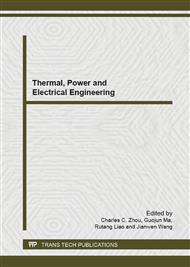p.1016
p.1023
p.1029
p.1033
p.1038
p.1045
p.1052
p.1056
p.1065
Transient Stability Assessment of Power System Using Support Vector Machine with Generator Phase Plane Trajectory Inputs
Abstract:
Transient stability assessment (TSA) is part of dynamic stability assessment of power systems, which involves the assessment of the systems ability to remain synchronism under credible disturbances. Recent research shows that transient stability status of a power system following a large disturbance such as a fault can be early predicted based on phase plane trajectories of generator variables. Based on this, a binary support vector machine (SVM) classifier with generator phase plane trajectory inputs was trained to predict the transient stability status. In order to find the best trajectory inputs, three different types of phase plane trajectories were designed. By investigating effectiveness of the three trajectories with New England 39-bus test system, classifiers with phase plane trajectories of electromagnetic power as inputs achieved better predictions than other two types of trajectories. The highest accuracy achieved by the classifier with inputs of electromagnetic power phase plane trajectories is 99.336% which can meet requirements of practical application.
Info:
Periodical:
Pages:
1038-1042
Citation:
Online since:
August 2013
Authors:
Price:
Сopyright:
© 2013 Trans Tech Publications Ltd. All Rights Reserved
Share:
Citation:


